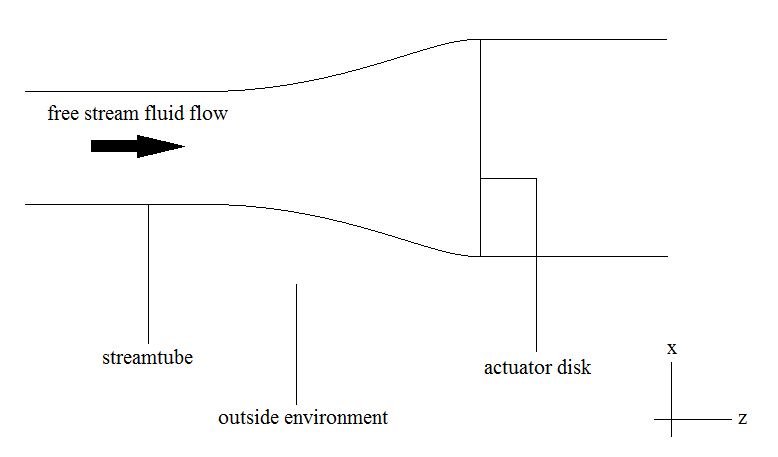|
Blade Element Momentum Theory
Blade element momentum theory is a theory that combines both blade element theory and momentum theory. It is used to calculate the local forces on a propeller or wind-turbine blade. Blade element theory is combined with momentum theory to alleviate some of the difficulties in calculating the induced velocities at the rotor. This article emphasizes application of BEM to ground-based wind turbines, but the principles apply as well to propellers. Whereas the streamtube area is reduced by a propeller, it is expanded by a wind turbine. For either application, a highly simplified but useful approximation is the Rankine–Froude "momentum" or "actuator disk" model (1865,1889). This article explains the application of the "Betz limit" to the efficiency of a ground-based wind turbine. A development came in the form of Froude's blade element momentum theory (1878), later refined by Glauert (1926). Betz (1921) provided an approximate correction to momentum "Rankine–Froude actuator-disk" th ... [...More Info...] [...Related Items...] OR: [Wikipedia] [Google] [Baidu] |
Blade Element Theory
Blade element theory (BET) is a mathematical process originally designed by William Froude (1878), David W. Taylor (1893) and Stefan Drzewiecki to determine the behavior of propellers. It involves breaking a blade down into several small parts then determining the forces on each of these small blade elements. These forces are then integrated along the entire blade and over one rotor revolution in order to obtain the forces and moments produced by the entire propeller or rotor. One of the key difficulties lies in modelling the induced velocity on the rotor disk. Because of this the blade element theory is often combined with momentum theory to provide additional relationships necessary to describe the induced velocity on the rotor disk, producing blade element momentum theory. At the most basic level of approximation a uniform induced velocity on the disk is assumed: :v_i = \sqrt. Alternatively the variation of the induced velocity along the radius can be modeled by breaking the b ... [...More Info...] [...Related Items...] OR: [Wikipedia] [Google] [Baidu] |
